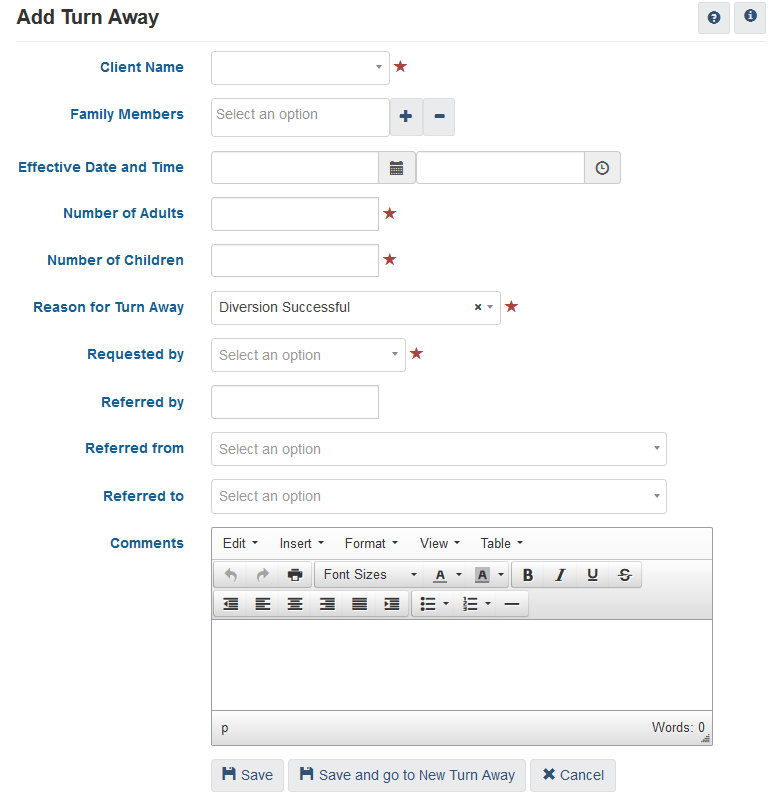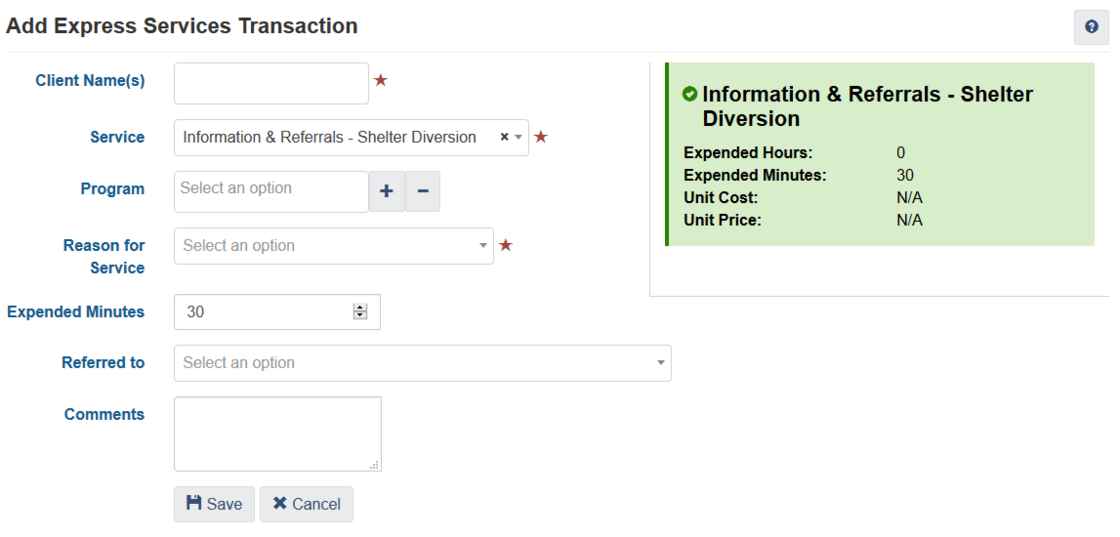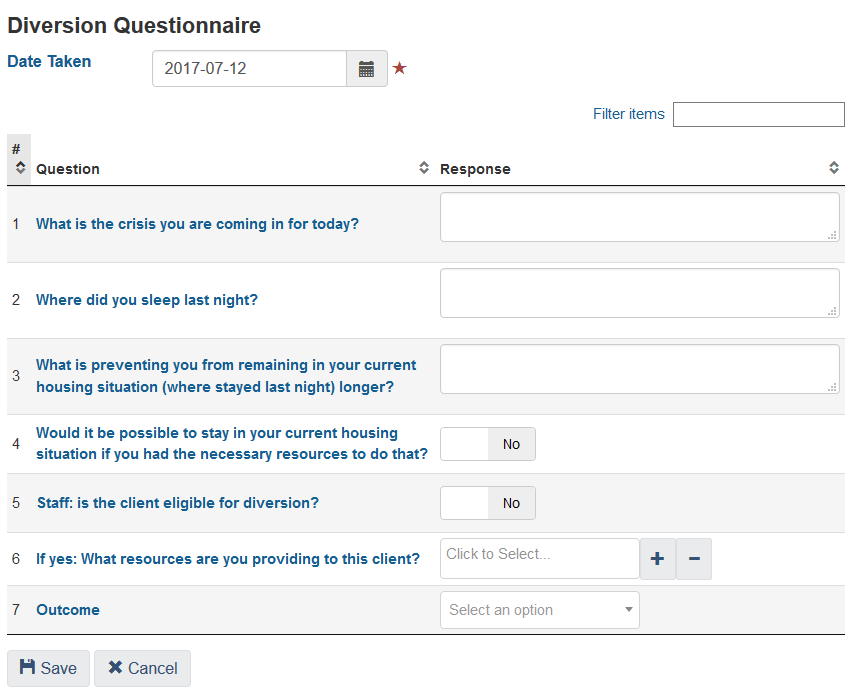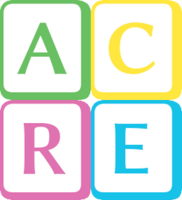
Update: As of HIFIS 4.0.60.1, there is a new Diversion module in HIFIS and this whole post is irrelevant. We’re leaving it up, in case you’re interested in reading it, but the current answer to “How to Record Shelter Diversion in HIFIS 4” is: use the Diversion module.
Over at ACRE Consulting Academy, we offer:
And to report out on your Diversion efforts:
Communities often ask about the best way to record shelter diversion in HIFIS 4. This is another area where there is no clear answer. There are a few good options, each with their own strengths and weaknesses. But first, let's talk about what diversion means in your community.
What is diversion?
Consider this definition from the National Alliance to End Homelessness:
Diversion is a strategy that prevents homelessness for people seeking shelter by helping them identify immediate alternate housing arrangements and, if necessary, connecting them with services and financial assistance to help them return to permanent housing.
Or this definition from the Region of Waterloo:
Diversion as a formalized practice within the housing stability system is a relatively new tool used to prevent the use of emergency shelter by providing individualized supports before families and individuals enter the shelter system.
Shelter diversion occurs when a family or individual presents at a shelter seeking services (e.g. a bed) for homeless people. However, after a conversation with staff, the person reveals that they have other alternatives for accommodations (e.g. they can stay with a relative), and don't require services as if they were homeless.
Usually, in successful diversion, the individual or family does not end up staying in a shelter, and might not ever return for other services. Sometimes, however, staff give the diverted person short term assistance, like financial assistance or mediation. Sometimes, staff conduct follow-ups with the diverted person after a few days.
So is a diverted person a client?
This is the single biggest challenge when it comes to recording diversion in HIFIS. In HIFIS, every service that is provided must be tied to a client, with a few exceptions.
Which means that if you'd like to say that you provided a service called diversion, it's almost always going to need a client file.
... which means you're going to need to create a client file for everyone who you successfully divert.
... which means you're also going to need the client's consent to store their data in HIFIS.
... which means you're going to need to do an intake for these clients, spending time sitting with the client and completing forms as if they were going to stay in a shelter, but they're not actually going to be in shelter.
This could be confusing for staff and clients. The person is in a grey area of someone that we're helping (client) but not someone who's staying in our shelter (not client).
How you handle this depends a lot on how your staff are trained. If your staff truly believe that when they divert someone from entering a shelter, they're helping that client find the best solution for them, and that they're really providing a service, there shouldn't be an issue with doing an intake. The intake is likely to provide information that they can use to find the best diversion solution.
If, on the other hand, staff are not really on board with the idea of shelter diversion, they might think about diversion differently. They might believe that the powers that be just want the shelter to reduce intakes. Or maybe they've been taught that clients are ineligible for shelter admission if they have somewhere else to stay. If they think that a diverted person is someone they're not helping, then they might find it contradictory to create a client file for diverted people.
What information do you want to collect?
The next challenge communities face is what data to collect. For instance: is it sufficient to just know how many people were diverted? Or do we want to know how diversion occurred? Do we need to know where diverted people ended up staying?
Depending on your answers, there are a few places you can record diversion:
Turn Aways
Arguably, this is the most logical place to record diversion efforts. Both Turn Aways and diversion have the same basic element: someone is trying to stay in shelter and in the end, they do not stay in shelter.

You could add an option to the Reason for Turn Away field called "Diversion Successful" or something similar. Then, you could create a report that displays data about all the turn aways with this value.
You could also store useful information in the Referred to field. For example, you could say that staff referred a client to a "Family Member's House" or a "Motel."
Anonymous Turn Aways
One of the advantages to using the Turn Aways module is that you don't need to choose a client. You can add an anonymous turn away, which records demographics instead of a client's name. HIFIS otherwise treats anonymous Turn Aways the same as regular Turn Aways, which means you can attach some diversion activities to client files and not others.
A major drawback of using Turn Aways is the attitude of staff. If they need to record diversion (when they've worked with a client to find a solution for half an hour) the same way they record a turn away ("sorry, shelter's full") it could confuse the two concepts.
Express Service
An alternative to turn aways is to record the diversion as a service in the Goods & Services module.

Staff can record that they completed diversion with a client and where, if anywhere, they referred the client to. Staff can also record how long they spent working with the client.
Note that the Reason for Service field is mandatory. Communities could creatively customize this drop-down menu to include options like "Dispute with landlord" and "Utility arrears". Otherwise, the field might not give useful data.
A limitation of this approach is that staff need to attach this service to a client file. Also, there's nowhere to record which staff was working with the client, if that is important for performance indicators.
You could also use a similar approach to record this information in Case Management, by opening a case with the goal of "Shelter Diversion."
Survey
Within HIFIS 4, administrators can create an unlimited number of surveys. Because most diversion conversations have a set list of questions, this could be a good fit. Staff then attach a completed survey to a client file.

The advantage with this approach is that it is the most flexible for the community's needs. However, it requires the most configuring and will necessarily require a custom report to extract any data. Since it is a custom survey, standard reports won't display this data.
Also note that completing a survey with a client is not considered providing a service to that client. Any report that looks up clients that received services will exclude any survey data.
Conclusion
At the time of writing, there is no best place to record diversion in HIFIS. However, there are two good options: Turn Aways or Express Services. I'd recommend using Turn Aways unless you have a specific reason why not. Then, use Express Services.
What do you think is the best method? Has your community found another solution that works well? Am I missing something important? Is there a need for a change to HIFIS 4 to accommodate diversion better? Let me know what you think!

Comments